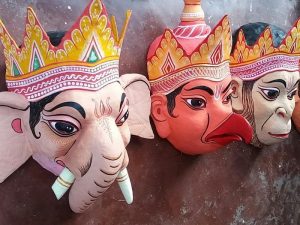| Syllabus: GS-I, Subject: History-Art and Culture, Topic: Art & Architecture , Issue: GI Tag |
Context: The traditional Majuli masks in Assam were given a Geographical Indication (GI) tag.

● Largest river island in the world and the seat of Assam’s neo-Vaishnavite tradition.
● Location: In Assam, formed by the Brahmaputra River to the south and east, the Subansiri River to the west.

Continue Reading

Unlock Your Potential with Expert IAS Coaching. Your Path to Success Begins Here. Join Us on the Journey to Excellence.
Resources
- Blog
- Instructors
- Courses
- Daily Current Affairs
- Daily Issues
Scroll to Top
WhatsApp us
